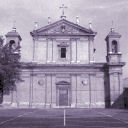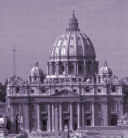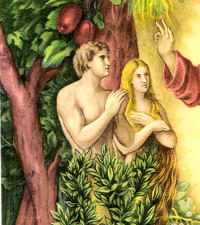» Enjoy our Liturgical Seasons series of e-books!
But Jesus told them, "Because of the hardness of your hearts he wrote you this commandment. But from the beginning of creation, 'God made them male and female. For this reason a man shall leave his father and mother (and be joined to his wife), and the two shall become one flesh.' So they are no longer two but one flesh. Therefore what God has joined together, no human being must separate" (Mark 10:5-9).
According to the 1962 Missal of St. John XXIII the Extraordinary Form of the Roman Rite, today is the feast of St. Matthias, apostle. His feast in the Ordinary Form of the Roman Rite is celebrated on May 14.
From the Beginning of Creation Marriage Was Sacred
The link between secularization and the crisis of marriage and of the family is only too clear. The crisis concerning the meaning of God and that concerning moral good and evil has succeeded in diminishing an acquaintance with the fundamentals of marriage and of the family which is rooted in marriage. For an effective recovery of the truth in this field, it is necessary to rediscover the transcendent dimension that is intrinsic to the full truth of marriage and the family, overcoming every dichotomy that tends to separate the profane aspects from the religious as if there were two marriages: one profane and another sacred.
"God created man in his own image; in the image of God he created him; male and female he created them" (Gn 1,27). The image of God is found in the duality of man and woman and in their interpersonal communion. For this reason, transcendence is inherent in the existence of marriage, right from the start, because it belongs to the natural distinction between man and woman in the order of creation. In their being "one flesh" (Gn 2,24), the man and the woman, in their mutual assistance and fruitfulness, participate in something sacred and religious, as the Encyclical Arcanum divinae sapientiae of my Predecessor Leo XIII emphasized, pointing to the understanding of marriage held in ancient civilizations (10 Feb. 1880, Leonis XIII P.M. Acta, vol. II, p. 22). In this regard, he observed that marriage "from the very beginning was a figure (adumbratio) of the Incarnation of the Word of God" (ibid.). In the state of original innocence, Adam and Eve already had the supernatural gift of grace. In this way, before the Incarnation of the Word took place historically, its effective holiness was already being bestowed on humanity.
Excerpted from Natural Marriage Already Has Sacred Dimension, John Paul II, February 5, 2003

At Rome, the Station is in the church of St. Anastasia, where, formerly, the Mass of the Aurora on Christmas Day was celebrated. The first church was built in the late 3rd or early 4th century, and was one of the first parish churches of ancient Rome. It was given by a woman called Anastasia and called titulus Anastasiae after her. Later, it was dedicated to a martyr of the same name.
 Saturday of the First Week of Lent (Ember Saturday)
Saturday of the First Week of Lent (Ember Saturday)
Station with San Pietro in Vaticano (St. Peter's in the Vatican):
The Station is in the Basilica of St. Peter in the Vatican, where the people would assemble towards evening, that they might be present at the ordination of the priests and sacred ministers. The original basilica was built by Constantine in 323 over the place where St. Peter was buried.
For more on San Pietro in Vaticano, see:
For further information on the Station Churches, see The Stational Church.








